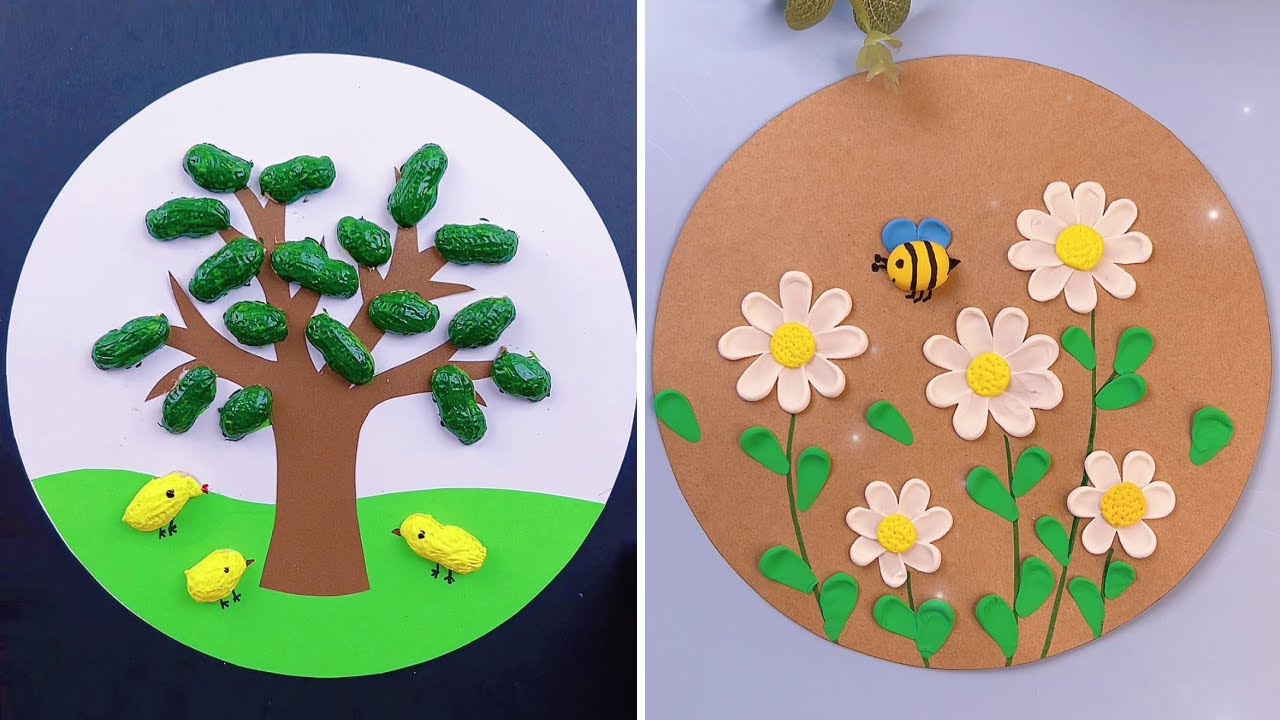The intersection of craftsmanship and technology: how digital tools are transforming handmade creation

The Integration of Digital Tools in Handmade Creation
As artisans and craftsmen navigate the evolving landscape of their art, they are discovering that technology can serve as a powerful ally in enhancing their creative process. This intersection of digital innovation and traditional craftsmanship has yielded an exciting synthesis that challenges conventional definitions of craftsmanship while maintaining the rich heritage of handmade goods.
One of the most significant advancements that digital tools provide is enhanced precision. For instance, laser cutting technology allows woodworkers to achieve intricate designs with unmatched accuracy, elevating the quality of their work. In textiles, digital fabric printing methods enable artists to produce stunning patterns that were once limited by the capabilities of hand-dyed materials. This newfound precision not only enhances the aesthetic appeal of handcrafted items but also preserves the integrity of the artisan’s vision, making it possible to replicate designs without compromising quality.
Moreover, the broadened creativity facilitated by digital resources cannot be overstated. The rise of 3D printing technology, for example, opens up a plethora of possibilities in fields as diverse as jewelry design and furniture making. Artisans can now use digital modeling software to experiment with bold shapes and complex structures, pushing the boundaries of traditional materials. Crafters can incorporate new synthetics that offer different textures and durability, allowing for innovative products that captivate modern consumers.
Furthermore, the advent of online marketplaces has significantly increased accessibility for artisans, enabling them to reach a global audience. Platforms like Etsy and Shopify provide a stage for local craftsmen to showcase their work to potential buyers around the globe. This democratization of the marketplace means that skilled artisans from small towns in the United States can compete with larger companies, fostering a vibrant community of creators. The ease of setting up an online shop has revolutionized how artisans market their products, allowing them to share their stories and unique approaches directly with consumers.
However, this transformative journey raises complex questions about authenticity and value. As technology becomes more intertwined with the craftsman’s process, consumers may wrestle with what it truly means for something to be handmade. Are products still considered art if they are partially created using digital tools? The answer may depend on personal definitions of art and craftsmanship, leading to diverse perspectives based on individual experiences.

As we explore this fascinating evolution, it becomes evident that digital tools are reshaping handmade creation, creating a future ripe with opportunity and innovation. For artists and consumers alike, this merging of tradition and technology could redefine the meaning of craftsmanship and impact the way we value the art of making.
DIVE DEEPER: Click here to explore nature photography
Expanding Horizons: The Role of Technology in Craftsmanship
The fusion of craftsmanship and technology is not merely a trend but a profound evolution that enhances the very essence of handmade creation. Digital tools are empowering artisans to explore new frontiers while upholding their crafts’ traditional values. As we delve deeper into this synthesis, it becomes apparent that technology seamlessly integrates into the creative landscape in several pivotal ways.
At the forefront of this transformation is the influence of computer-aided design (CAD) software, which serves as an essential tool for many artisans. This technology allows craftsmen to create detailed virtual models of their designs before they materialize in the physical world. For example, furniture makers can manipulate materials through CAD programs, envisioning how a piece will look and function before they even cut a single piece of wood. This aspect of design efficiency optimizes not only the creative process but also minimizes material waste and production costs, ensuring that every piece is thoughtfully crafted.
In addition to CAD, new innovations like augmented reality (AR) and virtual reality (VR) are revolutionizing how artisans interact with their creations and consumers. These technologies offer immersive experiences, allowing potential buyers to visualize how a handmade item will fit into their spaces. For instance, a local ceramicist may allow customers to virtually place their pottery within a kitchen setting, enhancing the consumer’s connection to the product and ultimately increasing the likelihood of purchase. Such interactions create an emotional resonance, bridging the gap between craftsmanship and modern retail experiences.
Moreover, the ability to utilize automation in production processes has not compromised but rather enriched the world of handmade goods. Techniques like CNC machining can execute intricate cuts and designs with precision that might take hours or even days for an artisan to achieve by hand. This has sparked a new dialogue within the crafting community: how can technology amplify the craftsman’s hand rather than replace it? The answer often lies in the mantra of collaboration—technologies assist rather than dominate, facilitating creativity and efficiency in an artisan’s workflow.
The integration of technology into craftsmanship also extends to educational opportunities. Online platforms, including YouTube, Coursera, and Skillshare, now provide access to countless tutorials and masterclasses that bridge the skills gap for aspiring artisans. By democratizing education, these resources empower individuals across the United States to learn traditional techniques enriched with technological savvy, ultimately leading to a new generation of artisans who blend both worlds into their practice.
As we navigate this intersection of craftsmanship and technology, it is crucial to recognize the emergence of a community built on collaboration and creativity. The artisans leveraging these tools are not simply adapting; they are redefining the very notion of what it means to create handmade goods. Through this dynamic interplay, technology is not just a means to an end; it is a catalyst for innovation, opening up endless possibilities for those committed to the art of making.
| Category | Advantages |
|---|---|
| Enhanced Precision | Digital tools enable artisans to create intricate designs with unmatched accuracy, leading to superior quality in handmade products. |
| Streamlined Processes | Automation of repetitive tasks through technology allows craftsmen to focus on creativity, enhancing their overall productivity and innovation potential. |
The intersection of craftsmanship and technology is a growing phenomenon that empowers artisans to push the boundaries of traditional creation. By leveraging digital fabrication tools, artisans can prototype their ideas faster and experiment with forms and materials that were previously difficult or impossible to achieve. This technological integration not only enhances the overall aesthetic of handmade items but also introduces new avenues for artistic expression. Furthermore, online platforms allow these craftsmen to reach a global audience, crucially expanding their market beyond local limitations. This fusion of handmade creation and technology opens doors to collaborations that can reshape creative industries and engage consumers in ways that honor tradition while embracing innovation. As these developments unfold, the landscape of handmade arts will continue to evolve, intertwining human skill with cutting-edge advancements.
DISCOVER MORE: Click here to unleash your creativity with sustainable crafting
Reimagining Tradition: The Impact of Digital Tools on Craftsmanship
As the world of handmade goods evolves, one cannot overlook the role of 3D printing in the dialogue between craftsmanship and technology. This groundbreaking process allows artisans to create complex shapes and structures that would be impossible to achieve through traditional methods alone. Whether it’s stunning jewelry with intricate patterns or bespoke shoe designs tailored to individual specifications, 3D printing opens new avenues for expression and innovation in craftsmanship.
Additionally, this technology allows for rapid prototyping, enabling artisans to test and iterate their designs with unprecedented speed. A small batch manufacturer can design a unique product, print a prototype, and make necessary adjustments in mere hours rather than weeks. This agility not only accelerates the artistic process but also encourages experimentation, paving the way for original concepts traditionally stifled by time constraints.
Furthermore, artisans are harnessing the power of digital marketing tools to broaden their reach and engage with customers in meaningful ways. Social media platforms like Instagram and Pinterest have become invaluable for showcasing craftsmanship. Artisans can now visually narrate their stories, share behind-the-scenes content, and foster online communities around their artisanal products. Handmade goods are no longer confined to local markets; they have transcended geographical limits, allowing artisans to connect with a global audience.
One intriguing manifestation of this digital engagement is the rise of crowdfunding platforms like Kickstarter and Indiegogo, where artisans can present their projects and gather the necessary backing to bring their creations to life. This model not only validates an artisan’s design but also cultivates a loyal community that feels personally invested in the craft. Funders often become advocates who amplify outreach and visibility, creating a symbiotic relationship that elevates both the artist and their creations.
The intersection of craftsmanship and technology also welcomes sustainability as a significant consideration in the creative process. Digital tools enable artisans to adopt a more eco-friendly approach by optimizing production techniques, which can lead to reduced energy consumption and waste. For instance, some leatherworkers utilize software to accurately calculate material needs based on their designs, minimizing excess cuts that ultimately contribute to landfill waste. Here, technology and craftsmanship unite to foster a more responsible and sustainable design ethos.
Emerging technologies are further encouraging customization in handmade goods. Artisans can now utilize digital tools to offer tailored products that cater to individual preferences. For example, custom embroidery services can take customer designs and quickly adapt them into personalized items, enhancing the intrinsic value of handcrafted works. The blending of technology and craftsmanship empowers consumers to play an active role in the creation process, leading to products that resonate on a personal level.
As digital tools continue to reshape the landscape of handmade creation, the possibilities appear boundless. Artisans are not merely adapting to technological advancements; they are leveraging them to redefine their practices, innovate their offerings, and build communities that celebrate the fusion of traditional skills with modern capabilities. Each digital tool contributes to a greater narrative, illustrating the profound connection between craftsmanship and technology as they evolve together in this exciting era of creation.
DIVE DEEPER: Click here to discover tasty ethnic recipes
Conclusion: Craftsmanship Meets Innovation
The thrilling convergence of craftsmanship and technology is not merely a trend; it represents a profound transformation in the way artisans create and engage with their communities. As digital tools revolutionize handmade creation, artisans are discovering new forms of expression that merge traditional skills with modern innovations. From 3D printing that unlocks intricate designs to customization services that allow for personalized creations, the realm of handmade goods has expanded into an exciting frontier.
Moreover, the powerful impact of digital marketing and crowdfunding platforms fosters a robust, global network that connects artisans with enthusiastic patrons, thereby enhancing the visibility and reach of handmade products. No longer confined to small local markets, these creators have the opportunity to share their unique stories and crafts across the globe, driving interest and cultivating dedicated communities.
The emphasis on sustainability highlights a critical aspect of this artistic evolution, where artisans are now better equipped to implement eco-friendly practices, thereby reducing waste and energy consumption. As we witness the integration of technology, it is essential to remember that these tools do not replace traditional craftsmanship; instead, they enhance it, allowing artisans to navigate the demands of modern consumers while honoring their heritage.
Ultimately, this intersection of craftsmanship and technology signifies an awakening in the creative world. A new narrative is unfolding in which artisans are reshaping their identities and practices while inviting consumers to play an empowering role in the creation process. As we move forward into this digital age, the dazzling possibilities of handmade creation beckon, encouraging all to embrace, explore, and support this evolving art form.


